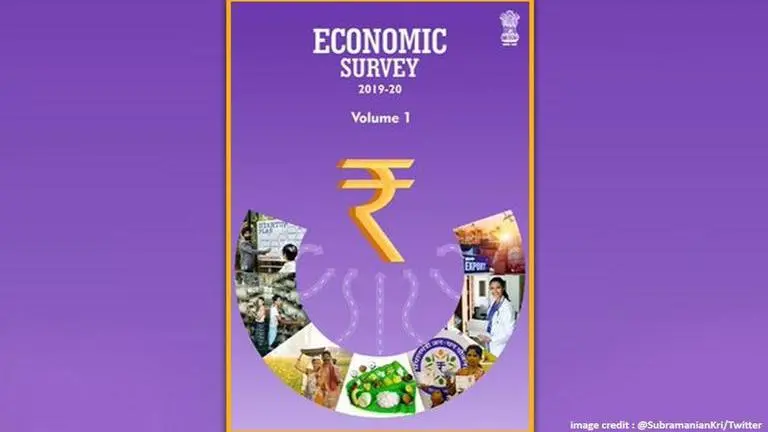Updated 31 January 2020 at 17:18 IST
Economic Survey cover in lavender colour as ‘synthesis of old and new’
Ahead of the Union Budget, the Economic Survey for 2019-2020 tabled in the Parliament had the lavender cover symbolising the blend of the old and the new.
- India News
- 3 min read

The Economic Survey for 2019-2020 tabled in the Parliament had the lavender cover symbolising the blend of the old and the new. Chief Economic Advisor Krishnamurthy V Subramanian said that the theme of the survey was ‘wealth creation’ and the lavender colour captured the new 100-rupee note together with the old note that has been around for very long.
"Wealth is both a cause and effect of investment. That is why it is important for us to focus on wealth creation," said Subramanian on the theme of the economic survey. The top economic advisor added that the lavender colour suggested measures like increasing government spending and tax cuts, indicating the government’s stance on the upcoming Union Budget.
#EcoSurvey2020 presents a synthesis of the old & the new signified by the lavender of the new "₹ 100 note" coming together with the one of the older currency notes - that of
— K V Subramanian (@SubramanianKri) January 31, 2020
Rs. 100. #WealthCreation @FinMinIndia @PIB_India @nsitharaman pic.twitter.com/LzZHKlb2S5
'Pink' and 'sky blue' in the past
The colours of the economic survey’s cover were pink and sky blue for 2017-18 and 2018-19 respectively. While pink was used as an ode to women empowerment, sky blue was meant to convey unfettered ‘blue sky’ thinking. According to the latest Economic Survey, India’s GDP is pegged to grow at 6 to 6.5 per cent for 2020-21, in sharp contrast with the projections of the International Monetary Fund (IMF), which has predicted 4.8 per cent growth.
Advertisement
Economic Survey is an annual document that reviews the economic progress of the previous year, focusing on the performance of major developmental schemes and government policies. It is released a day before the Union Budget and prepared by the country's Chief Economic Advisor.
Advertisement
Meanwhile, Union Finance Minister Nirmala Sitharaman is all set to present her second Union Budget on February 1 where the government’s primary motive would be to drive consumption by leaving more money in common man’s hand. During the pre-election interim budget in 2019, the then Finance Minister Piyush Goyal had announced full tax rebate for income up to Rs 5 lakh but the tax slab remained unchanged. The huge spike in the income tax slab could be rationalised by increasing the basic exemption limit and reducing the tax to 10 per cent on an annual income of Rs 5 lakh - Rs 10 lakh.
Published By : Kunal Gaurav
Published On: 31 January 2020 at 17:18 IST
